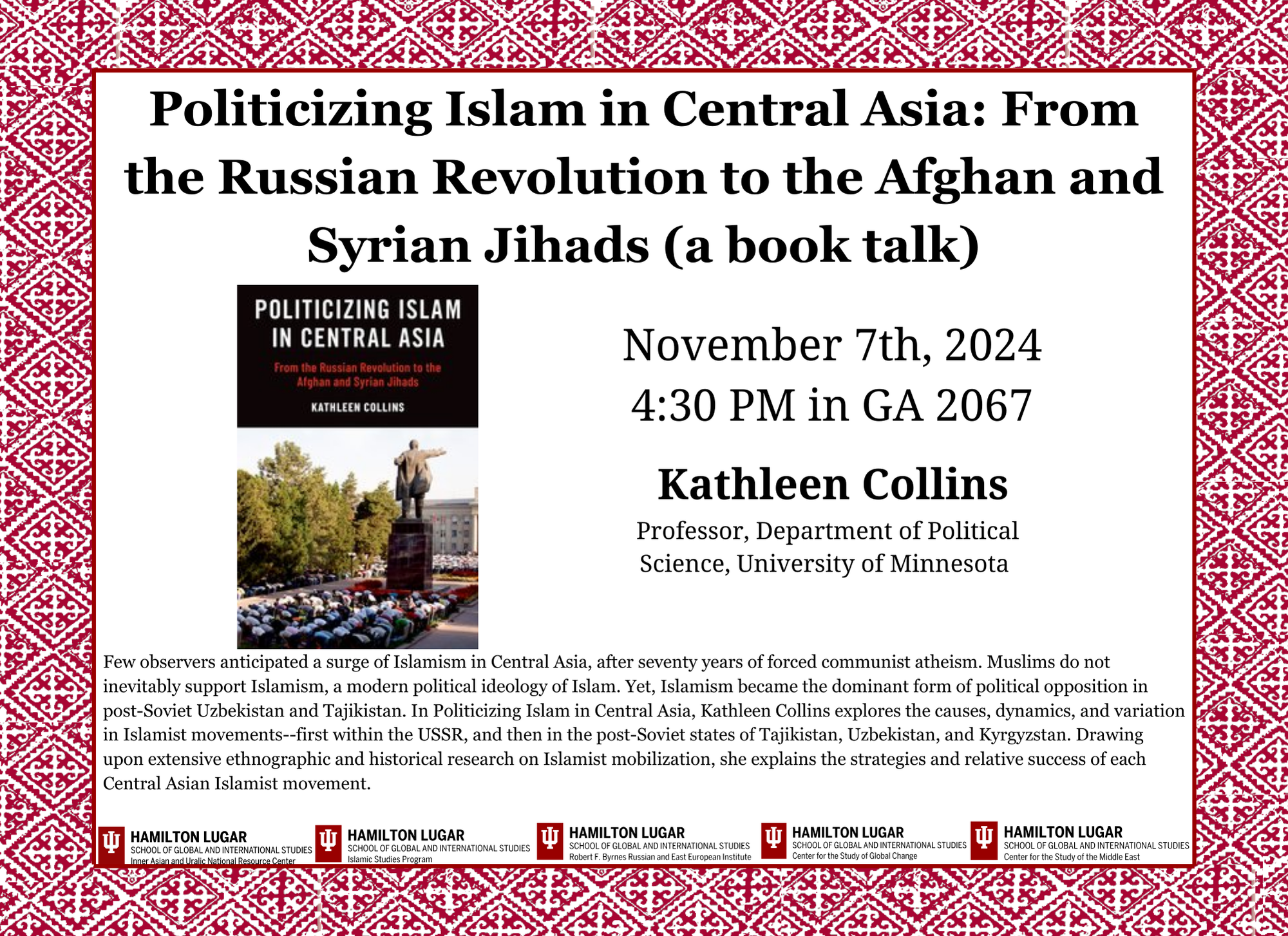On Thursday, November 7th, 2024 the Inner Asian and Uralic National Resource Center, the Islamic Studies Program, the Center for the Study of Global Change, the Robert F Byrnes Russian and East European Institute and the Center for the Study of the Middle East were proud to sponsor a lecture by Dr. Kathleen Collins from the University of Minnesota on her recently published monograph, Politicizing Islam in Central Asia: From the Russian Revolution to the Afghan and Syrian Jihads. In the lecture Dr. Collins provided a brief and insightful overview of her research and findings covered in her book. Dr. Collins discussed the history of political repression directed towards religious activists in the Soviet Union and its successor states in Central Asia from the early 1910s up until the present day. The lecture focused on identifying the conditions under which Islamist movements have either been strengthened or repressed during the history of Soviet and contemporary Central Asia. Dr. Collins argued that Islamist movements have only emerged in Central Asia when three conditions exist: an environment of state repression, the presence of an Islamist ideology and an associational space. For example, during the early years of Soviet power in Central Asia in the 1920s, Islamist movements did not emerge because although there was the suppression of Islam by the Soviet state, and the existence of an associational space in which activists could sometimes organize, an Islamist ideology did not yet exist. However, by the 1970s, Central Asian religious figures began to incorporate Islamist ideologies which had originated in Egypt earlier in the century, into their own political movements. At this time there was also the existence of an associational space in the form of the underground networks in which activists and religious figures could operate. These factors coupled with the suppression of unsanctioned religious activities by the Soviet state led to the emergence of the first wave of Islamist activity in Central Asia. Examining other episodes in recent Central Asian history, Dr. Collins emphasized that in cases when one of these three factors – Islamist ideology, associational space, and state repression – are not present then Islamist movements in the region are unable to operate. After the lecture there was rich discussion amongst the audience regarding the relationship between state repression and the activities of Islamist parties or movements in Central Asia.
Politicizing Islam in Central Asia: From the Russian Revolution to the Afghan and Syrian Jihads (a book talk)
Thursday, November 07, 2024


